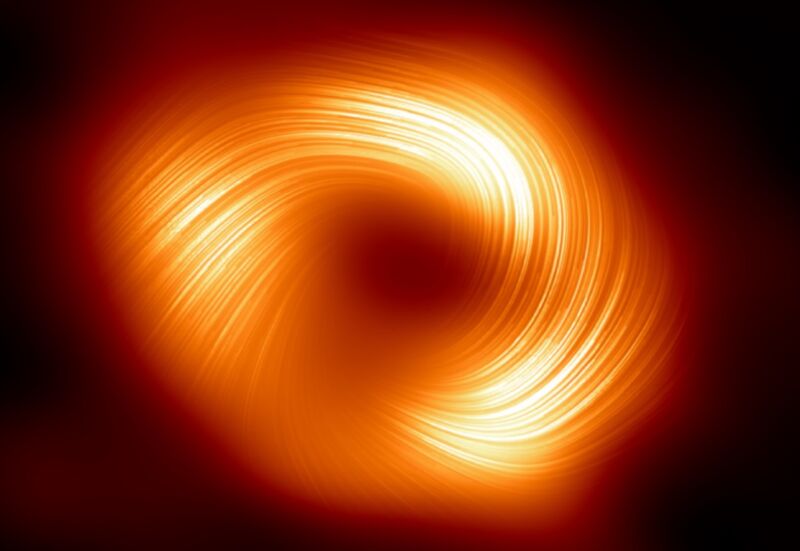Since 1980, physicists have been claiming that a supermassive black hole is located in the center of the Milky Way, but the first «photo» was obtained only two years ago (and another one is currently available) — thanks to the Event Horizon Telescope (EHT).
This time, astronomers first observed Sagittarius A, located at a distance of about 27 thousand light-years from Earth, in polarized light and recorded the swirling magnetic fields surrounding it — which is strikingly reminiscent of another «picture» In fact, the only way to «photograph a» black hole — is to image the shadow cast by light as it is bent by the object's powerful gravitational field. EHT, which shows the supermassive black hole M87.
In fact, the only way to «photograph a» black hole — is to image the shadow cast by light as it is bent by the object's powerful gravitational field. EHT, which shows the supermassive black hole M87.

Astronomers suggest that strong and well-organized magnetic fields may be common to all black holes. In addition, given that M87’s magnetic fields cause powerful jets or «jets» — Sagittarius A may have its own hidden but weaker jet.
«This new image, together with a strikingly similar polarization structure seen in the much larger and more powerful black hole M87, shows that strong and ordered magnetic fields are crucial to how black holes interact with the gas and matter around them,» says Sarah Issaun, co-leader of the study and a member of the Center for Astrophysics at Harvard and the Smithsonian Institution.

EHT is not just a telescope, but a whole array of observatories scattered around the world: The Atacama Large Millimeter Array, the Atacama Pathfinder Experiment, the IRAM 30-meter telescope, the IRAM NOEMA Observatory, the James Clerk Maxwell Telescope, the Large Millimeter Array, the Submillimeter Array, the Submillimeter Telescope, the South Pole Telescope (SPT), the Kitt Peak Observatory, and the Greenland Telescope.

Spelling error report
The following text will be sent to our editors: